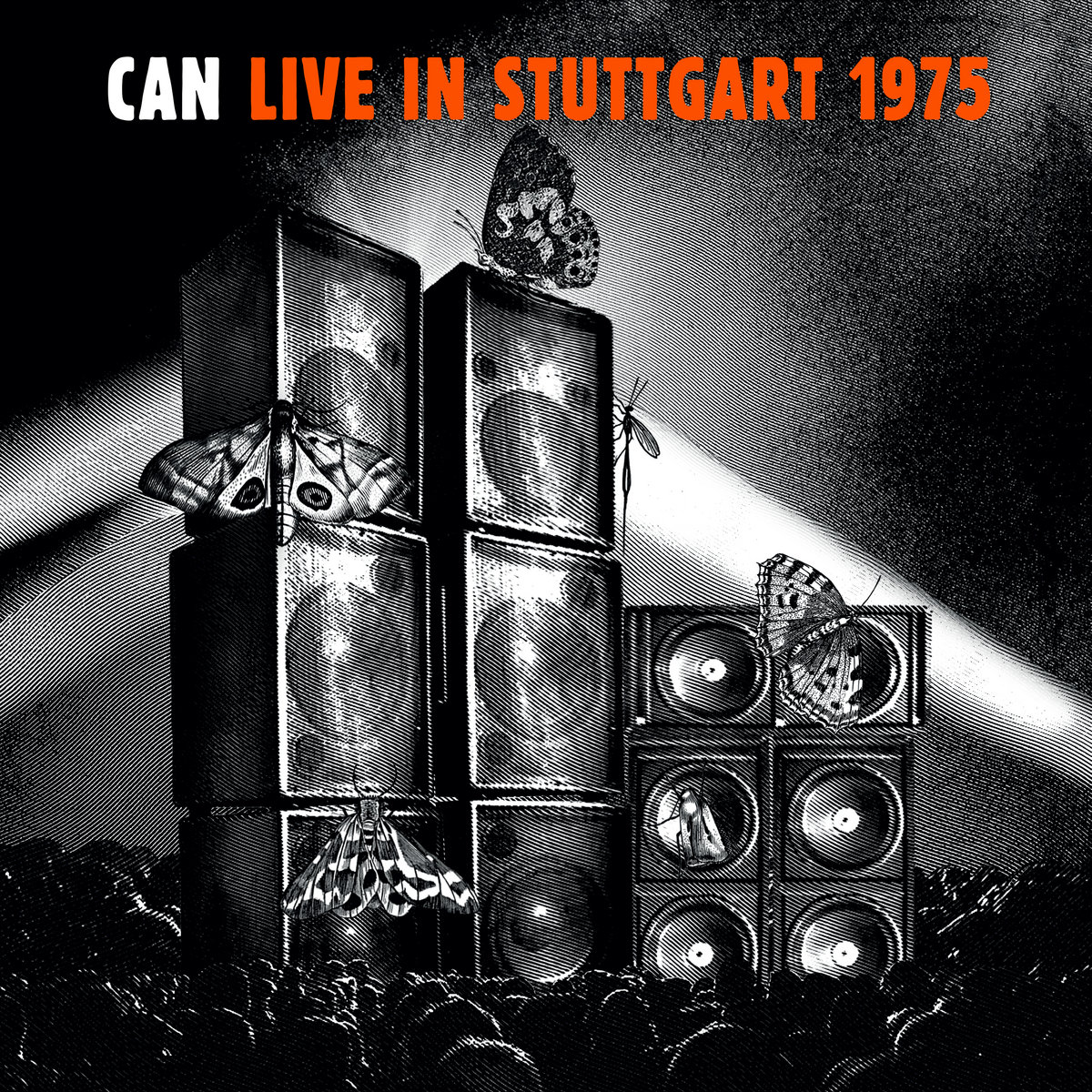 Legendary German kosmiche band Can is not a "hits" band. Despite being known for classic studio work with individual tracks such as "Vitamin C," "Halleluwah," "Mother Sky," and "Future Days," Can, first and foremost, are an improvisational band. While this was a core driver of their studio output, it is particularly evident in their live performances, of which bootlegs of assorted quality exist, noted for never playing a song the same way twice. Singer Damo Suzuki had left the group by this time and Can had released their sixth official studio recording, Landed, an album some fans identify as the marker of Can's slide from greatness. A meticulously produced album, the rock sheen of that studio album could not tell the story of Can's true nature. This polished bootleg — for which we have a devoted fan with large pants to thank — separates the studio mystique from the musicians, showcasing their enduring and practiced talent, revealing the genius of the band's four original members that forever make Can an icon of music history.
Legendary German kosmiche band Can is not a "hits" band. Despite being known for classic studio work with individual tracks such as "Vitamin C," "Halleluwah," "Mother Sky," and "Future Days," Can, first and foremost, are an improvisational band. While this was a core driver of their studio output, it is particularly evident in their live performances, of which bootlegs of assorted quality exist, noted for never playing a song the same way twice. Singer Damo Suzuki had left the group by this time and Can had released their sixth official studio recording, Landed, an album some fans identify as the marker of Can's slide from greatness. A meticulously produced album, the rock sheen of that studio album could not tell the story of Can's true nature. This polished bootleg — for which we have a devoted fan with large pants to thank — separates the studio mystique from the musicians, showcasing their enduring and practiced talent, revealing the genius of the band's four original members that forever make Can an icon of music history.
This legendary performance features Irmin Schmidt on keys, Jaki Leibezeit on drums, Michel Karoli on guitar, and Holger Czukay on bass. Live in Stuttgart 1975 is the first in a series of polished bootlegs, remastered from tape by sole remaining member Schmidt and longtime producer Rene Tinner, and available officially for the first time on various media formats, notably in a beautiful orange 3-disc vinyl version. There's not much revealing about the tracks at first glance, numbered simply one to five in German, with the shortest track clocking in at 9:31 and ranging to 35:58. Nor is there anything particularly revealing about the cover art, a stack of amps in a live setting superimposed with butterflies, moths, and the odd mosquito. It's not until cracking open the artifact is the essence revealed.
With thankfully only minimal crowd noise revealing this is indeed a live recording, Schmidt's spacey keyboard sounds introduce "Eins." Merely two minutes are given for what feels like a warm-up, before Czukay, Karoli, and Leibezeit converge perfectly with Schmidt in perfect union. Leibezeit's motorik and precise, almost machine-like drumming rounds everyone together, serving as an initial foundation to Karoli's guitar, providing him the freedom to build cascading sustained play around Czukay's pronounced bass lines, while Schmidt uses his keyboards to build up a distinct atmosphere encouraging the direction of the music. This magic happens within the first 5 minutes, with another 15 minutes left to go. By this time, the members have each fully tuned into each other, carefully listening for musical cues; a change in bassline rhythm, the introduction of a fresh guitar tone, keyboard intensity growing or withdrawing, or a shift in the drum pattern. By 7 minutes, the song has taken on a sense of urgency and developed a life of its own. Karoli may drop in a bit of blues here, Leibezeit a dose of jazz there, and Czukay taking over such that his bass becomes the lead instrument in the song. The incredible thing about all this is that it all works, fluidly shifting and changing, no curve ever missed in a journey of twists and turns, a well-oiled machine with no one single driver.
Each member's talent is evident, but none over another. It's astounding to hear the machine-like precision of Liebezeit's drumming, even at its most complex, revealing his practiced ability to deliver jazz, funk, reggae, and rock rhythms flawlessly, changing up without notice in a single track. It's no wonder he's been an inspiration for countless drummers. Similarly exciting is Karoli's fluidity to evoke staccato chords, fuzzed-out sustain, jazzy chords, and metal-worthy guitar solos, knowing exactly where to hold back. Well before bassists like Les Claypool and Flea made their instrument lead drivers in their respective bands, Czukay paves the way, especially evident in large swathes of "Drei." Furthermore, Schmidt's keyboards are a constant, underlying driver of mood, at times so subtly unobtrusive for the less keen listener until suddenly, there they are, front and center. Still, a second listen shows they never went away; in fact, for tracks like "Drei" and "Fünf," it becomes apparent they were vital to drive the track's mood and style.
The genius of Can reveals itself on Live in Stuttgart 1975 without a single lyric. Instead, one need only listen to the distinct abilities of each member — each instrument separated clearly through the miracle of modern remastering — and the incredible live energy to get swept up in the unique details of the band's live performance. None of the five tracks are reminiscent of any of the band's studio work, though keen ears will hear snippets from other works. Raw in all its glorious immediacy, this artifact may surprise listeners more familiar with the band's studio releases but brings a new dimension to the creative majesty that was Can.
Sound samples can be heard here.
Read More

